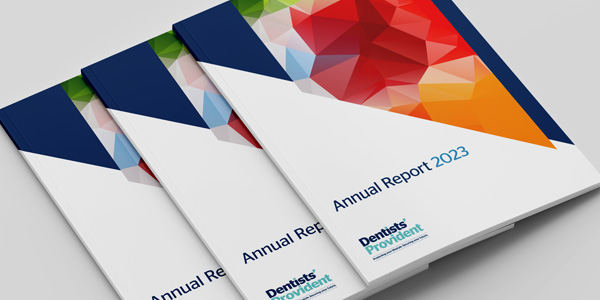
The summer has now well and truly arrived and with the torrential rain (hopefully) behind us, we can finally enjoy the long evenings, BBQs and relaxing on the patio. While all these things signify the joys of an English summer, they also remind us that we still haven’t got round to sorting out that beach body we planned or just taking the time to feel a little more healthy. But with all the conflicting information on diets and exercise available in the media, how do you untangle the myths while remaining motivated enough to make a difference, not just for this summer but for the long term?
We all know that eating a healthy balanced diet, reducing our alcohol, sugar and processed food intake, sitting less and exercising more can help us shed the excess pounds. But that is often easier to say than do as willpower and a shortage of free time get in the way.
You are in a position to talk to your patients about their lifestyle choices, but when you are discussing government recommendations, do you ever feel that you could be doing more yourself? If so, this article aims to help you through some of the most common diet and exercise myths and seeks to motivate you to find a method that works for you.
The truth about diets
In a 2014 study published in the Journal of the American Medical Association, the results of 48 individual and separate studies on different diets were compared to determine their individual effectiveness. Its conclusion was that there was little difference in the results achieved by the diets and participants’ weight loss success was largely down to what they (over 7,200 of them) could personally stick to, showing that the most important factor in finding the right diet is to find a solution that works for you and to which you can stick to.
At a physiological level, to lose weight we need to burn more calories than we take in. But how can we calculate that? Well, one method suggested is that in order to lose a pound of fat, we first need to create a 3,500 calorie deficit which can be achieved either through diet or exercise alone, or by combining the two.
Crash dieting may have an impact on weight loss in the short term, but in the long term it has been proven to not be a healthy solution. In fact the NHS warn us that crash dieting could actually have the opposite effect, slowing down our metabolism while depriving our bodies of vital nutrients and vitamins, as well as making us feel unwell.6 Modest, positive changes brought about by a long term commitment to a renewed lifestyle and healthy eating habits, however, are more likely to have a continued effect on any desired weight loss and is far healthier in the long run. Having a structured diet may even give you greater focus, allowing you to effectively control and monitor your food and drink intake and, combined with a programme of exercise, could be more sustainable and heathy moving forwards.
Sound advice
Before choosing a new diet, we are all advised to speak with our doctor who can ensure that any changes we make are healthy, balanced and will not cause us any harm. It might also be a good idea to speak with a nutritionist or dietitian too.
Nutritionists, for example, look at the whole process of what you eat, when and why. They will often ask you to keep a food diary as a way of determining your average calorific intake, as well as your total energy expenditure, which is calculated by determining your basal metabolic rate (the amount of energy your body needs to complete its primary functions such as sleeping, digesting food, breathing etc.), plus your non-exercise adaptive thermogenesis (or NEAT - the amount of calories burnt through such factors as fidgeting) and any deliberate physical activity or exercise you do. Once you have this calculation, you can work out what deficit in calories you need to lose weight and how many calories you should eat in a day to maintain a healthy lifestyle.
Other sources of valuable information include the other BDA, the British Dietetic Association, who produce factsheets on a variety of health and diet related topics and NHS Choices, who offer further advice to help you, your team or your patients reach your individual goals.
Questionable food facts?
An article published in New Scientist last year suggested that to eat healthier, we also need to change our eating environment. US based researchers discovered that the colour of your plate often affects the size of your servings, as people choosing foods the same colour as their plate, for example, a red pasta sauce on a red plate or a white pasta sauce on a white plate, added on average 18% more calories to their plate than those people who had a contrasting coloured plate. The same principle also applied to drinks, as studies concluded that those choosing to drink red wine (which is easier to see than white) tended to pour approximately 9% less into their glass. Researchers also found that those who plated their food before sitting down ate 19% less than those who served themselves at the dinner table. Finally, those who kept food in constant view, such as housing cereals on work tops, were on average 9.5 kilograms heavier than those who kept them out of sight.
The case for exercise
As well as burning the extra energy you need to lose weight, tone or build muscle, exercise also helps your heart to function more efficiently, improves the quality of your sleep and makes you feel better by getting rid of the stresses of the day, or setting you up for them. And you don’t have to be a gym fanatic to benefit.
A report published in 2014 by the University of Cambridge suggests that just 20 minutes of brisk walking a day could be all it takes to lessen a sedentary person’s risk of early death by between 16-30%. Government guidelines support this type of approach, indicating that we should all do 150 minutes (2.5 hours) of moderate exercise a week, just 30 minutes five days a week - or alternatively 75 minutes of ‘vigorous aerobic activity’ (such as running or playing singles tennis) - both with muscle strengthening exercises on top.
Remember I stated earlier that in order to lose one pound of fat, we must first create a deficit of 3,500 calories? Well, a safe amount of weight to lose and maintain for long term weight loss is 1lb a week, so this means either reducing your intake by 500 calories a day or burning that number of calories through exercise. Using the equation mentioned above, a woman weighing 66kg (just over 10 stone) uses 1,394 calories a day just through her body’s normal calorific functioning needs (the basal metabolic rate) before doing any exercise. Considering that the average adult woman is advised to consume 2,000 calories a day, it’s not as difficult as it sounds to create that calorie deficit without overdoing it.
Of course, your genes can make a difference too. There are now a number of genetic tests available that can determine how the type of exercise you do and the foods you eat are impacted by your particular genes. You don’t necessarily need to be a famous model or Olympic hopeful to find the results of these tests both interesting and useful. Results can even include your sensitivity to such factors as carbohydrates, fats, salt, alcohol or caffeine. From an exercise point of view, you can also learn if you are more of an endurance or power ‘athlete’, or if you are prone to soft tissue injuries or other conditions as a result of your genetic makeup. While some areas may be interesting to note, others can warn you of potential future health risks, giving you the opportunity to take action.
So, if we are to accept that any exercise is better than none, just how much exercise is enough and what type of exercise is the most effective?
There has been much debate in the media and sports world on the fat-reducing benefits of endurance activities (such as long distance running or cycling) compared to shorter, high-intensity interval training (HiiT) sessions (like sprints). In 2011, a study suggested regular HiiT sessions significantly increases anaerobic and aerobic fitness and can result in the loss of abdominal fat in some individuals. While the study advised that more research was needed, the thinking of late appears to be that a moderate level of exercise seems to be better for you, although both can affect degrees of weight loss. However, high intensity exercise can be tough on your body and, without any long term research, it may be more harmful to some individuals, as it can increase your blood pressure and have been known to even cause strokes.
Can you exercise too much?
Is there a risk of you overdoing it? It is important to remember that, as a dental professional, sports injuries can have a detrimental effect on your ability to practise. So there could be a need for you to play it safe compared to people in occupations which are less reliant on their manual dexterity, eyesight and flexibility. According to the US National Sports Medicine Institute (NSMI), the most common cause of a sports injury is ‘the failure to warm-up sufficiently before beginning strenuous activity.’ It is also just as important to cool your muscles down after any activity and return your heart rate back to normal.
Sports trainers and doctors regularly remind us that we are more likely to be at risk of injury when taking on any new exercise regime, so starting slowly is the general advice. Additionally sports injury experts indicate that increased flexibility can help to reduce the possibility of injury as a preventive measure and activities such as stretching, Pilates or yoga can all help. However, it is always advisable to seek medical advice if you are about to embark on any new exercise programme, making sure that you take adequate rest so as not to overdo it and cause overuse injuries.
This is good advice, as last year Dentists’ Provident paid claims of almost £70,000 for sports related injuries alone, with the time required to recover away from surgery likely to have an impact on members, as well as their patients and team.
The final word
Monitoring your energy intake and expenditure by keeping a food and exercise diary, either a written one or using one of the many apps that are now available, allows you to not only see the calories you are taking in but the nutritional composition of that food as well. They are easy to complete and offer the user the opportunity to record foods you have previously eaten or by doing quick ‘look ups’ on the go, as well as scanning bar codes for further information. And if you have had a bad day then you only need to have a quick walk or run round the block to balance it out so you can have a little more for dinner...
The better we all look after our health and wellbeing, the more we can hope to get the most out of life. A healthy diet (most of the time), adequate physical activity and an appropriate degree of rest can all play crucial roles in how we feel about ourselves, our health and could get us closer to that beach body…
References available on request.
This article is intended for information only. It is not designed to give financial or medical advice, nor is it intended to make any recommendations of the suitability of our plans for a particular individual. Full details of our contract can be found in our rules on our website www.dentistsprovident.co.uk. Dentists’ Provident Society Limited does not accept liability and responsibility for changes made to this information. Some of the information in this article has been obtained from third parties. While we believe the information to be reliable; we make no representations as to its accuracy and accept no responsibility or liability for any error, omission or inaccuracy in the data supplied by any third party.
If you have any questions, please contact our member services consultants by emailing press@dentistsprovident.co.uk or calling 020 7400 5710.
If you have any questions, please contact our member services consultants by emailing
memberservices@dentistsprovident.co.uk or calling 020 7400 5710.

Our 2024 Annual General Meeting will be held at 91-94 Saffron Hill, London, EC1N 8QP on Friday 24th Ma…
Read more
The 2023 annual report from Dentists’ Provident, a leading income protection provider for dental profe…
Read more
Our next exhibition is the British Dental Conference & Dentistry Show in May, where we look forward to meeting anyone interested in becoming a member or members wanting to discuss their plans.